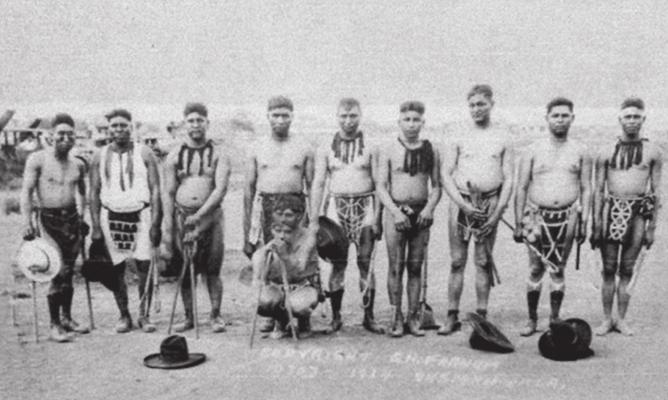Thlopthlocco Tribal Town
Thousands of lives were lost during the “Hard Walk” west, but the destruction of culture in Indian Territory turned out to be a second kind of death.
Thlopthlocco Tribal Town originated near Macon, Ga. and formed from the mother town of Tokepahce. Traditional homelands included the states of Alabama and Georgia. Thlopthlocco was one of 46 towns, settled on creeks, that comprised a confederacy of Muscogee (Creek) Indians with a common language.
Galen Cloud, tribal historic preservation officer in Okemah, where the tribal town is headquartered, said each town had its own council and government.
Pressure to remove from the ancestral territories in the southeastern United States was ongoing for decades. A pivotal point in the fight for the Thlopthlocco people to remain in Georgia was the Battle of Horseshoe Bend during the War of 1812. The U.S. army, led by Andrew Jackson, defeated the Upper Creek Red Sticks, forcing the cession of 23 million acres of land.
By 1829, Jackson had become president, and Indian removal was a primary objective of his executive agenda.
But the protection guaranteed to tribes was not delivered.
Cloud explains why the treaties were signed by the Creeks.
“I hear the questions. Why did you all move? We didn’t want to go, but we were forced. Our elders didn’t speak English. They only spoke the Muscogee language and a lot of them didn’t know what they were signing. A lot of them got duped.”
And many left their homelands with no advance notice, Cloud said.
“They were sleeping in their beds and the [soldiers] would come in, tell them to get up, and they started out. They were forcibly marched by gunpoint.”
For Thlopthlocco and 45 other Muscogee (Creek) tribal towns, the 850-mile journey to Indian Territory became known as “The Hard Walk.” Thousands of lives were lost. Cloud says deaths were never recorded and there was no accountability for crimes against humanity.
“I’ve heard stories from my great aunt that when they were marched here, they [soldiers] would kill the little babies with the butt of the guns to save bullets and the women would tie the little babies on the inside of their leg [to conceal], if they were boys, because the soldiers would kill them,” Cloud said.
Out of the 46 original tribal towns, 24 made it to Indian Territory. Many tribal members were killed by soldiers along the way. Some died from the harsh elements of winter and summer, others from starvation. Jackson’s promise “to save him [the Indian] from perhaps utter annihilation, the General Government kindly offers him a new home, and proposes to pay the whole expense of his removal and settlement” fell flat.
Most of the original Thlopthlocco town arrived in the vicinity of Okemah between 1832 and 1842. The promise of exclusive land west of the Mississippi turned empty, due to the overlapping of tribes.
“We’re a very strong people,” Cloud said. “It shows you how strong that we are, because through that walk to get here, that would have just wiped out anybody, we made it here. We came with nothing and we made something. We still have our traditions. We still have our culture. We still have our language.”
By 1938, Thlopthlocco Tribal Town had become a federally recognized tribe with 200,000 acres allotted by the U.S. government. It has jurisdiction in 12 Oklahoma counties, with an independent, self-sustaining government. There are more than 1,000 enrolled members, working to maintain traditions, culture and tribal sovereignty.
Christina Yargee describes her heritage as rich.
“It’s not something you can read in a book. It’s something we live by with our hearts and in our minds and is something I’m very, very proud to be a part of. I think that’s probably the best thing that I can hope for in terms of my own children, is to keep them on the same path, and hopefully be able to grow and learn.”
Jim North is a reporter with Gaylord News, a reporting project of the University of Oklahoma Gaylord College of Journalism and Mass Communication.

